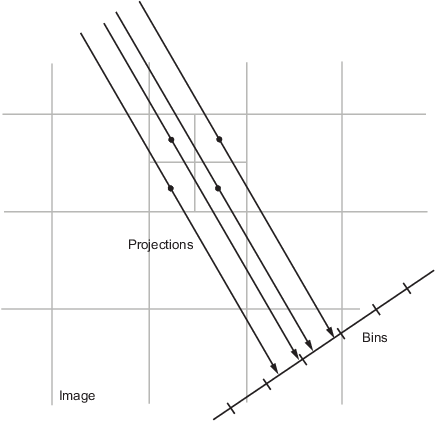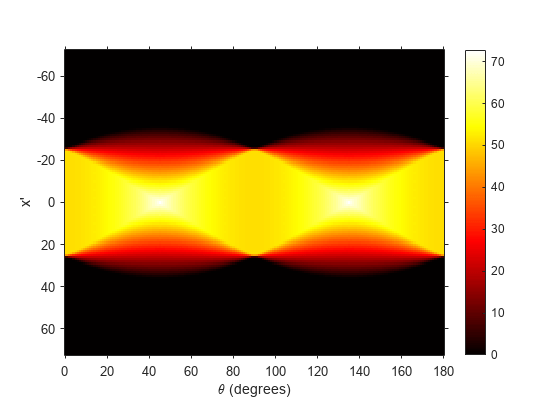radon
拉东变换
说明
示例
输入参数
输出参量
算法
图像的拉东变换是其中每个像素的拉东变换的总和。
算法首先将图像中的每个像素分成四个子像素,并单独对每个子像素投影,如下图所示。

根据投影位置和 bin 中心之间的距离,每个子像素的贡献按比例拆分到两个最近的 bin。如果子像素投影到 bin 的中心点,则轴上的 bin 将获得子像素的完整值,即像素值的四分之一。如果子像素投影到两个 bin 之间的边界,则子像素值在这两个 bin 之间均匀拆分。
参考
[1] Bracewell, Ronald N., Two-Dimensional Imaging, Englewood Cliffs, NJ, Prentice Hall, 1995, pp. 505-537.
[2] Lim, Jae S., Two-Dimensional Signal and Image Processing, Englewood Cliffs, NJ, Prentice Hall, 1990, pp. 42-45.
